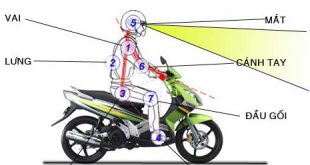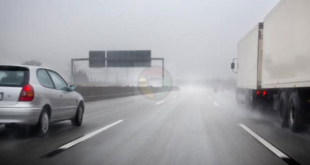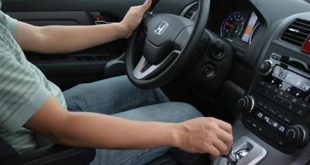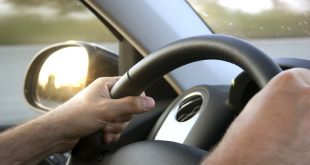Drive a car is the act of driving a four-wheeled motor vehicle on a road. This activity requires drivers to master vehicle control skills, road traffic laws and have a high sense of responsibility to ensure the safety of themselves and other traffic participants.
To be able to use your car on the road smoothly, you should prepare well before driving, such as checking the vehicle thoroughly, ensuring the correct driving position and paying attention to the vehicle's systems.
When driving a car on the road, you need to understand and comply with traffic signs, priority and yield rules, speed limits and safe distance between vehicles.
In addition, you need to master skills such as controlling vehicle position, braking and accelerating, driving in bad weather conditions, parking and controlling a car on the highway.
If you unfortunately encounter an accident, collision, sudden vehicle breakdown or other emergency situations, you need to stay calm, give warning signs to surrounding vehicles, and try to stop safely. and seek support from appropriate individuals/organizations.
You can learn about safe driving support systems, night driving experiences, etc. to increase your driving skills. If you are planning to study for a driver's license, learn carefully about the types of licenses, study times and training locations to make the choice that best suits your needs.
Equipping yourself with safe driving knowledge and skills is extremely important. This article will give you TOP Things to keep in mind to drive a car safely. Let's follow along!

Check Carefully Before Driving a Car
Before driving a car, you need to check the overall vehicle carefully, ensure the correct driving position and pay attention to the vehicle's systems.
1. Check the vehicle before departure
Before operating the vehicle, it is necessary to thoroughly check the overall appearance and details of the car's interior and exterior. As follows:
- Check the lighting system: Determine whether the headlights, taillights, turn signals and brake lights are working properly.
- Check tires: Make sure tire pressure is correct according to instructions in the vehicle owner's manual. Check the spare tire and make sure you have the tools to change it when necessary.
- Check engine oil and coolant: Make sure the engine oil and coolant levels are enough to help the vehicle operate normally.
- Check the brake and clutch system: Make sure the brake and clutch system works well. Check the brake fluid level and engine temperature gauge.
- Check the suspension and steering system: Look for signs of suspension and steering abnormalities, including engine vibrations, strange noises or instability when driving.
2. Ensure correct driving posture
Instructions for correct driving posture:
- Sit up straight, lean back in the seat, put your hands on the steering wheel, position 9 o'clock and 3 o'clock.
- The left foot is placed on the floor of the vehicle, the accelerator and brake pedals are easy to control.
- The distance from the driver's seat to the steering wheel is appropriate (arms straight, wrists slightly bent).
- The distance from the eyes to the rearview mirror and windshield is appropriate.
3. Check the car system
Check and ensure the car's systems operate well, with no signs of abnormalities or damage.
- Engine: Start the car, check for explosions, exhaust smoke, and engine error light.
- Brake system: Test the brakes to make sure they operate effectively and do not make unusual noises.
- Steering system: Check the steering wheel, steer gently, without shaking.
- Lighting system: Test turn on all lights to see if they work well.
- Warning system: Check safety warning systems such as ABS, ESP, blind spot warning...
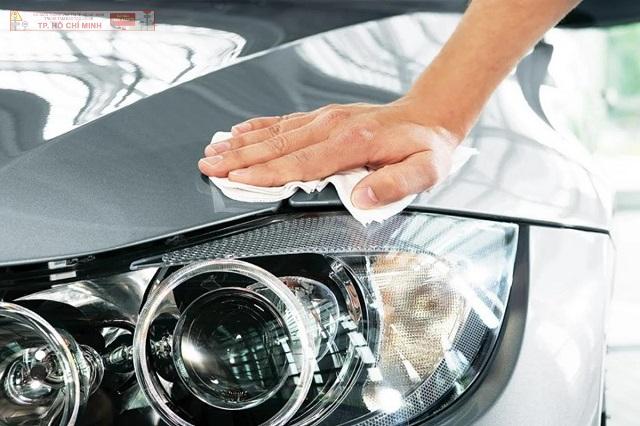
Master Basic Traffic Rules When Driving a Car
When driving a car on the road, to ensure safety you need to understand basic traffic rules such as: understanding and obeying traffic signs, priority and giving way rules, speed limits and distance limits. safe distance between vehicles.
1. Understand and obey traffic signs
Recognize and understand the meaning of traffic signs, including prohibition signs, command signs, instruction signs and danger signs. Follow the instructions given on signs and take appropriate driving actions.
2. Comply with priority and yield rules
Some principles of priority and giving way that car drivers need to pay attention to:
- Give way to pedestrians, cyclists, the elderly, and children.
- Give way to priority vehicles such as ambulances, police cars, and fire trucks.
- Comply with right-of-way and yield rules at intersections, roundabouts and other intersections.
3. Limit car speed
Drive at a speed consistent with the posted speed limit on the road. Pay attention to the maximum and minimum speed limits on various road sections, especially in urban areas, schools or residential areas.
4. Keep a safe distance from vehicles on the road
Keep a safe distance from other vehicles to have enough time to react and stop when necessary. Increase the safe distance in bad weather conditions, wet roads or when passing through densely populated areas.
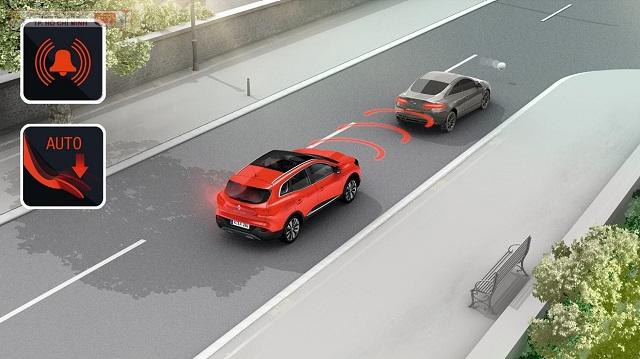
Proficient in Safe Car Driving Skills
The driving skills that drivers need to master include controlling vehicle position, braking and accelerating, driving in bad weather conditions, parking and controlling a car on the highway.
1. Control vehicle position
Maintain a stable vehicle position in the lane and keep a sufficient distance from surrounding vehicles.
Use the rearview mirror and windshield to observe your surroundings and adjust your driving position accordingly. Recognize dangerous situations, traffic signs and other elements on the road so you can react promptly and properly.
2. Braking and acceleration skills
Know how to use the brake and gas systems in a gentle way, avoiding sudden braking or accelerating too quickly.
Braking skills:
- Place your foot on the brake pedal gently and apply gentle braking force to avoid sudden braking. For anti-lock braking systems (ABS), apply strong and continuous braking force to keep the system operating optimally and avoid loss of control.
- Adjust braking force and braking timing based on traffic situation and distance from other vehicles.
Acceleration skills: Gradual and smooth acceleration, ensuring precise and not sudden gear changes. Monitor your speed target and maintain a safe distance from other vehicles when accelerating.
3. Driving in bad weather conditions
Know how to deal with harsh weather conditions such as rain, snow, fog or slippery roads. You should slow down, keep a safe distance, use headlights properly and increase visibility to ensure safety when driving in unfavorable weather conditions.
4. Safe parking skills
Implement parking skills such as horizontal and vertical parking safely and accurately by observing the rearview mirror and reversing camera.
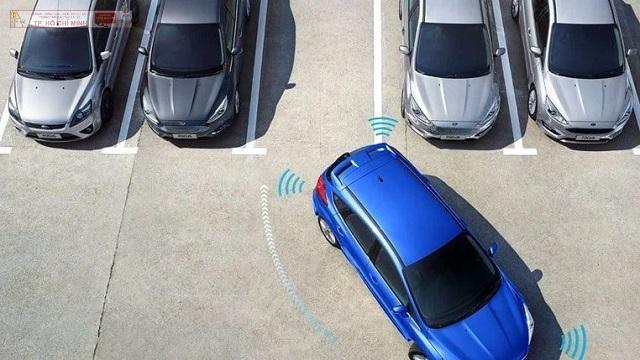
Prepare:
- Turn on your turn signal to let other road users know.
- Slow down and look around, find a suitable parking location.
- Turn on the underbody lights for better visibility in low light conditions.
Parking perpendicular to the sidewalk:
- Step 1: Pass the parking position about 1 meter.
- Step 2: Steer left (park right) or right (park left) until the car is parallel to the sidewalk.
- Step 3: Slowly reverse the car, adjusting the steering angle so that the car is perpendicular to the sidewalk.
- Step 4: Adjust the steering wheel so that the car is centered on the sidewalk, use the handbrake, and put the car in P.
Parking parallel to the sidewalk:
- Step 1: Turn on the turn signal and move the vehicle to a position about 1 meter from the vehicle in front.
- Step 2: Steer left (park on the right) or right (park on the left) until the vehicle's rearview mirror is level with the rear bumper of the vehicle in front.
- Step 3: Slowly reverse the car, while steering in the opposite direction so that the car is parallel to the sidewalk.
- Step 4: Adjust the steering wheel so that the car is parallel to the sidewalk, use the handbrake, and put the car in P.
Hill parking skills:
- Step 1: Turn on the turn signal and move the vehicle to a sloping position.
- Step 2: Steer left (park right) or right (park left) until the car is perpendicular to the slope.
- Step 3: Slowly reverse the car, while steering in the opposite direction so that the car is parallel to the slope.
- Step 4: Adjust the steering wheel so that the vehicle is parallel to the slope, use the handbrake, put the gear into P, and pull the handbrake.
Note:
- Always observe the rearview mirror, reversing camera and blind spots when parking.
- Use parking assist sensors if available.
- Avoid parking in dangerous, out of sight locations.
- Do not park your vehicle blocking the path or obstructing traffic.
5. Driving on the highway
Understand and follow the rules of highway driving, including lane, speed, and entry and exit regulations. Maintain a steady speed, keep a safe distance from other vehicles and actively observe traffic signs.
Handling Dangerous Situations While Driving
If you unfortunately encounter an accident, collision, sudden vehicle breakdown or other emergency situations, you need to stay calm, give warning signs to surrounding vehicles, and try to stop safely. and seek support from appropriate individuals/organizations.
1. The vehicle has an accident or collision
- Stay calm and don't lose mental control.
- Activate your warning lights and horn to warn other vehicles.
- Stop the vehicle safely if possible.
- Check the condition of the person affected by the accident, call an ambulance if anyone is injured.
- Report to authorities any serious accidents and collisions affecting health, life and property.
2. The vehicle is stuck or suddenly damaged
- Stay calm and assess the situation.
- Signal lights and horns to other vehicles to avoid collisions.
- Try to move the vehicle out of the stuck position by driving forward or backward, if safe. If that doesn't work, you and your passengers should get out of the car, go to a safe location and call for help.
3. Control the vehicle in emergency situations
- Keep calm, analyze the situation and make quick decisions.
- Use braking and acceleration appropriately, avoid sudden braking or sudden acceleration.
- Steering flexibly, avoiding obstacles and keeping yourself and others safe.
- Signal other vehicles to avoid collisions.
- Hold the steering wheel firmly to control the direction of the vehicle.
- If necessary, call for help or get help from others.
Regularly practicing skills to handle dangerous situations helps you react quickly and be more confident when driving.

Frequently Asked Questions When Driving A Car
You can learn about safe driving support systems, night driving experiences, etc. to increase your driving skills. If you are planning to study for a driver's license, learn carefully about the types of licenses, study times and training locations to make the choice that best suits your needs.
1. What systems are there to support safe driving?
Some systems to support car driver safety include AEB, FCW, BSM, LDW, LKAS, ACC... Information about each system is as follows:
- Automatic emergency braking system (AEB): Can detect obstacles in front of the vehicle and automatically brake if the driver does not react. AEB can help minimize or avoid collisions altogether.
- Forward collision warning (FCW): Warns the driver of the risk of collision with the vehicle ahead. FCW gives the driver enough time to take action to avoid a collision.
- Blind Spot Warning (BSM): Warns drivers of vehicles in their blind spots. BSM assists the driver in changing lanes or turning left safely.
- Lane departure warning (LDW): Warns drivers when they stray from their lane.
- Lane keeping assist (LKAS): Helps the driver keep the vehicle in their lane. LKAS is especially useful in heavy traffic or when driving long distances.
- Adaptive cruise control (ACC): Can automatically adjust the vehicle's speed to maintain a safe distance from the vehicle ahead.
- ...
2. How to drive a car safely at night?
To drive safely at night, make sure to check your vehicle thoroughly, get enough sleep, plan your journey, prepare snacks and drinks, slow down, keep a safe distance, and use Correct headlights, pay attention, avoid driving when tired or using your phone while driving. For more details, refer to the article sharing these Note to help drive a car at night the safest.
Before driving:
- Check the vehicle: Make sure the headlights, taillights, windshield wipers, and brakes work well. Check tire pressure and coolant level.
- Get enough rest: Drowsiness is a dangerous cause when driving at night. Make sure to get enough sleep before driving.
- Plan your journey: Determine in advance the route, stops and travel time.
- Prepare snacks and drinks: Avoid losing concentration while driving due to hunger or thirst.
When driving:
- Reduce speed: Night vision is limited, so slow down to give yourself more reaction time.
- Keep a safe distance: Keep a safe distance from the vehicle in front to be able to handle unexpected situations.
- Use headlights properly: Turn on headlights when it's dark or visibility is limited. Use cos lights when encountering vehicles coming from the opposite direction.
- Pay attention: Observe your surroundings carefully, especially in dimly lit areas.
- Avoid driving when tired: If you feel sleepy, stop and rest in a safe place.
- Avoid using your phone while driving: Using your phone while driving distracts you and can easily cause an accident.
Note:
- Be careful of wild animals: Wild animals may appear on the road at night. Please slow down and pay attention when passing through high-risk areas.
- Beware of pedestrians and bicycles: Pedestrians and bicycles can be difficult to see at night. Please pay attention when passing through densely populated areas.
- Avoid driving in heavy rain or dense fog: Visibility is limited in heavy rain or dense fog, making driving dangerous. You can refer to these Experience driving a car in the rain The safest is shared on the website.
3. What license do you need to drive a car?
To drive a car, you need a class B or class C driver's license.
Class B driving licenses are divided into two types:
- B1: Allowed to drive cars with up to 9 seats, including the driver, and trucks with a tonnage of less than 3,5 tons.
- B2: Allowed to drive cars with up to 16 seats, including the driver, and trucks with a tonnage of less than 3,5 tons.
If you want to drive a truck with a tonnage of 3,5 tons or more, you need a class C driving license.
You can register to learn to drive a car at reputable driving training centers nationwide.
4. How long does it take to learn to drive a car?
According to Circular 12/2017/TT-BGTVT, the time to learn to drive a car is from 3 to 6 months depending on the license class you want to take:
Grade B1: Total study time is 336 hours (about 3 months).
- Theory: 56 hours.
- Practice: 280 hours.
Grade B2: Total study time is 588 hours (about 3 months).
- Theory: 168 hours.
- Practice: 420 hours.
Grade C: Total study time is 920 hours (about 6 months).
- Theory: 168 hours.
- Practice: 752 hours.
However, actual study time may vary depending on the training center, student's learning ability and class schedule.
In addition, you also need to pay attention to some factors that affect the time it takes to learn to drive a car such as:
- Number of students in the class: The larger the class, the longer the theoretical learning time.
- Study schedule: A study schedule that suits you will help you study more effectively.
- Student's ability to absorb: Each person has different ability to absorb, affecting the time of practice.
- Initial driving skills: If you have driving experience, the practice time can be shortened.
5. Where is the most prestigious place to learn to drive a car in HCM?
If you need to learn to drive a car or Car driver training in HCM You can register for training and testing at City Driving Test & Training Center. Ho Chi Minh City. With many years of professional operation, the center has successfully helped thousands of students pass the car driving license exam easily and firmly hold the wheel when participating in traffic.

Reasons to choose City Driving Training & Testing Center. HCM:
- Possessing a team of experienced and highly specialized teachers, dedicated to guiding students.
- Scientific training roadmap helps students master safe driving knowledge and skills.
- The rate of students passing the test is high, even for those who are new to driving.
- Competitive tuition fees, no additional fees.
- There are a full range of cars of all types and a spacious practice yard system, serving well for practice lessons.
- The classroom system is spacious, modern and fully equipped.
- Free study materials.
- The class schedule is flexible, suitable for the needs of many students.
Being officially licensed to operate, we are committed to not allowing a situation where tuition fees have been paid but students are not allowed to study or take exams.
Contact us now for specific advice on the testing training program driver's license for motorbike or car professional at City Driving Test & Training Center. Ho Chi Minh City.
 Driving test & training school in Ho Chi Minh City Training, teaching and driving test school in Ho Chi Minh City
Driving test & training school in Ho Chi Minh City Training, teaching and driving test school in Ho Chi Minh City



